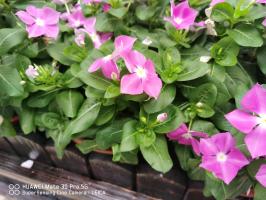Introduction
Water power plants, also known as hydroelectric power plants, are a renewable energy source that generates electricity by harnessing the power of flowing water. Water power plants use the kinetic energy of water to generate electricity, making it one of the cleanest and most efficient forms of energy generation. In this article, we will explore the process by which water power plants make electricity.
How Water Power Plants Work
Water power plants generate electricity through a simple process. First, water is held in a reservoir behind a dam. This creates a potential energy that can then be harnessed as the water flows downwards. The water flows through a turbine that converts the kinetic energy of the flowing water into mechanical energy. The turbine spins a generator, which uses the mechanical energy to produce electrical energy. The electricity is then transported to the grid by transmission lines.
Benefits of Water Power Plants
Water power plants offer numerous benefits over other forms of energy production. One of the most significant benefits is its renewable nature. Unlike fossil fuels, which are finite resources, water is a constantly replenished resource. Additionally, water power plants do not emit harmful pollutants into the environment, making it a clean form of energy production. It also offers a reliable source of electricity as the water flow can be controlled and adjusted to meet the demand.
Types of Water Power Plants
There are several types of water power plants that can be used to generate electricity. The most common type of water power plant is the conventional hydroelectric plant, which uses a dam to hold water in a reservoir. Another type of water power plant is a pumped storage plant, which pumps water from a lower reservoir to a higher reservoir during times of low demand for electricity. The water is then released from the higher reservoir when demand is high, allowing the electricity to be generated quickly. There are also in-stream hydrokinetic power plants, which generate electricity from the natural flow of water in rivers and oceans.
Challenges of Water Power Plants
While water power plants offer numerous benefits, there are also some challenges associated with their construction and operation. One of the most significant challenges is the environmental impact of building a dam, which can disrupt the natural flow of rivers and affect fish populations. Another challenge is the need for large-scale infrastructure to build and operate the plants, which can be costly to construct and maintain. Additionally, water power plants may not be suitable for areas with low water resources or areas with little to no water flow.
Conclusion
Water power plants offer a renewable and clean source of energy that has been utilized for over a century. By harnessing the power of flowing water, water power plants generate electricity efficiently and reliably. While there are some challenges associated with its construction and operation, the benefits of utilizing water power plants make it a worthwhile investment in our future energy production.

 how many times do yo...
how many times do yo... how many planted tre...
how many planted tre... how many pine trees ...
how many pine trees ... how many pecan trees...
how many pecan trees... how many plants comp...
how many plants comp... how many plants can ...
how many plants can ... how many plants and ...
how many plants and ... how many pepper plan...
how many pepper plan...






























